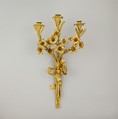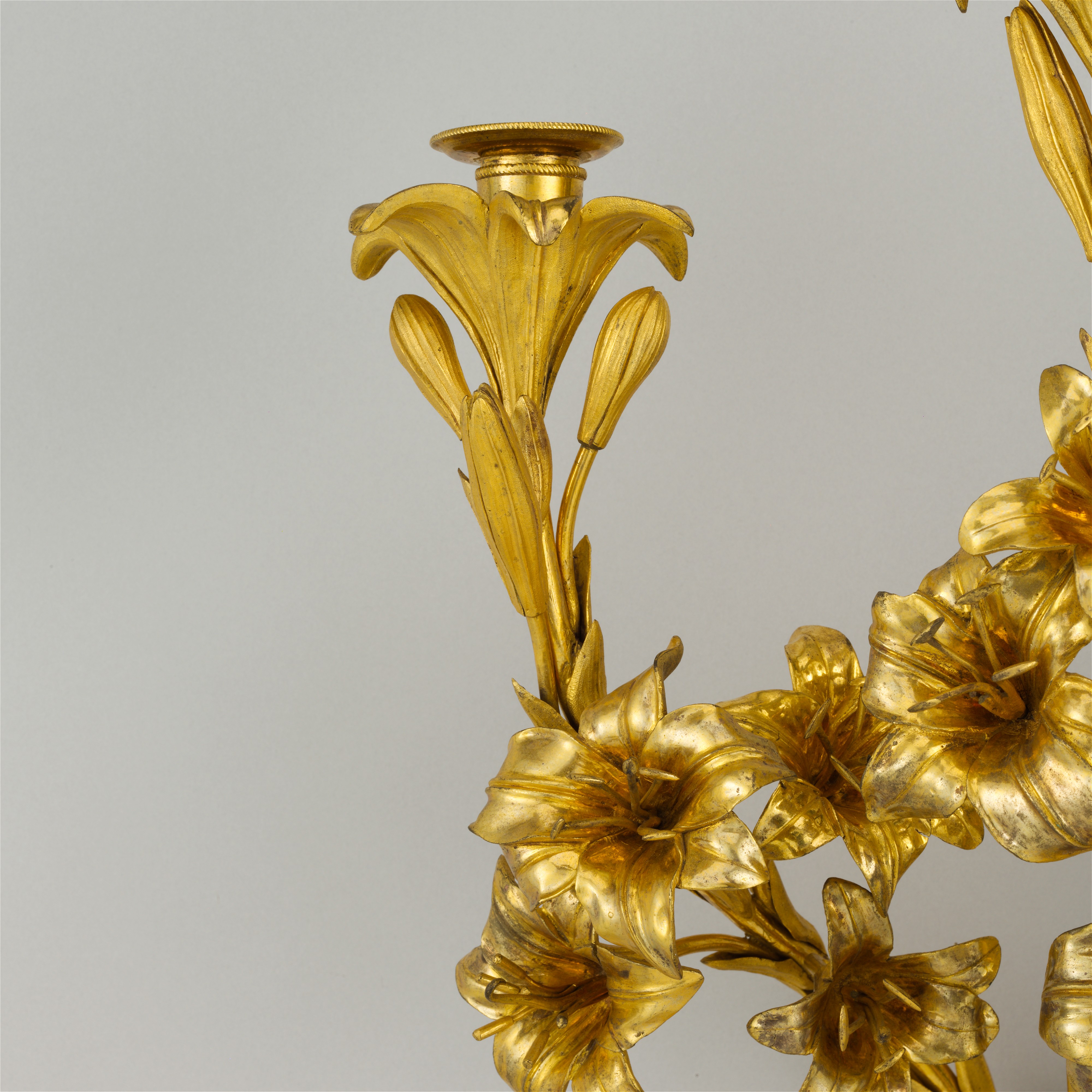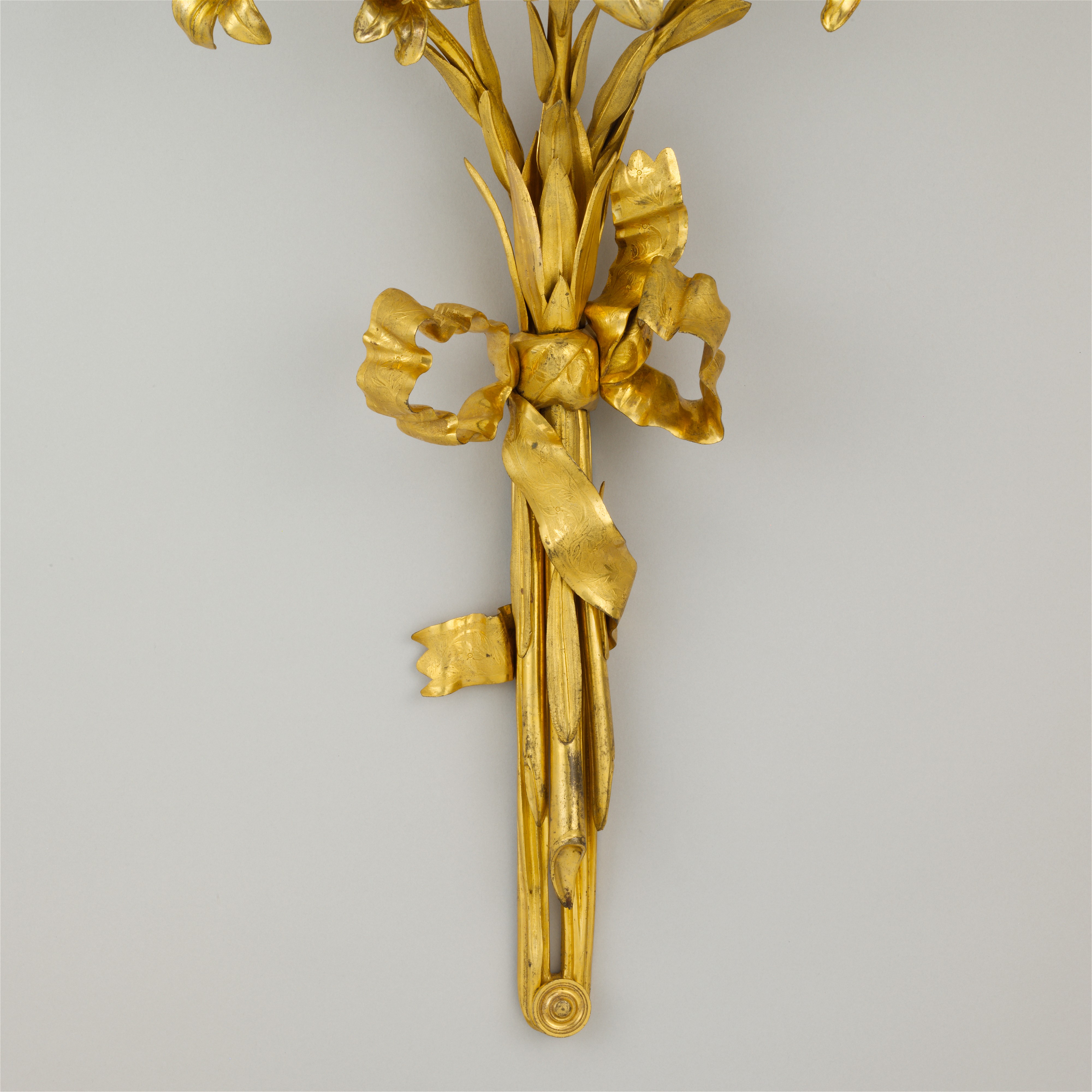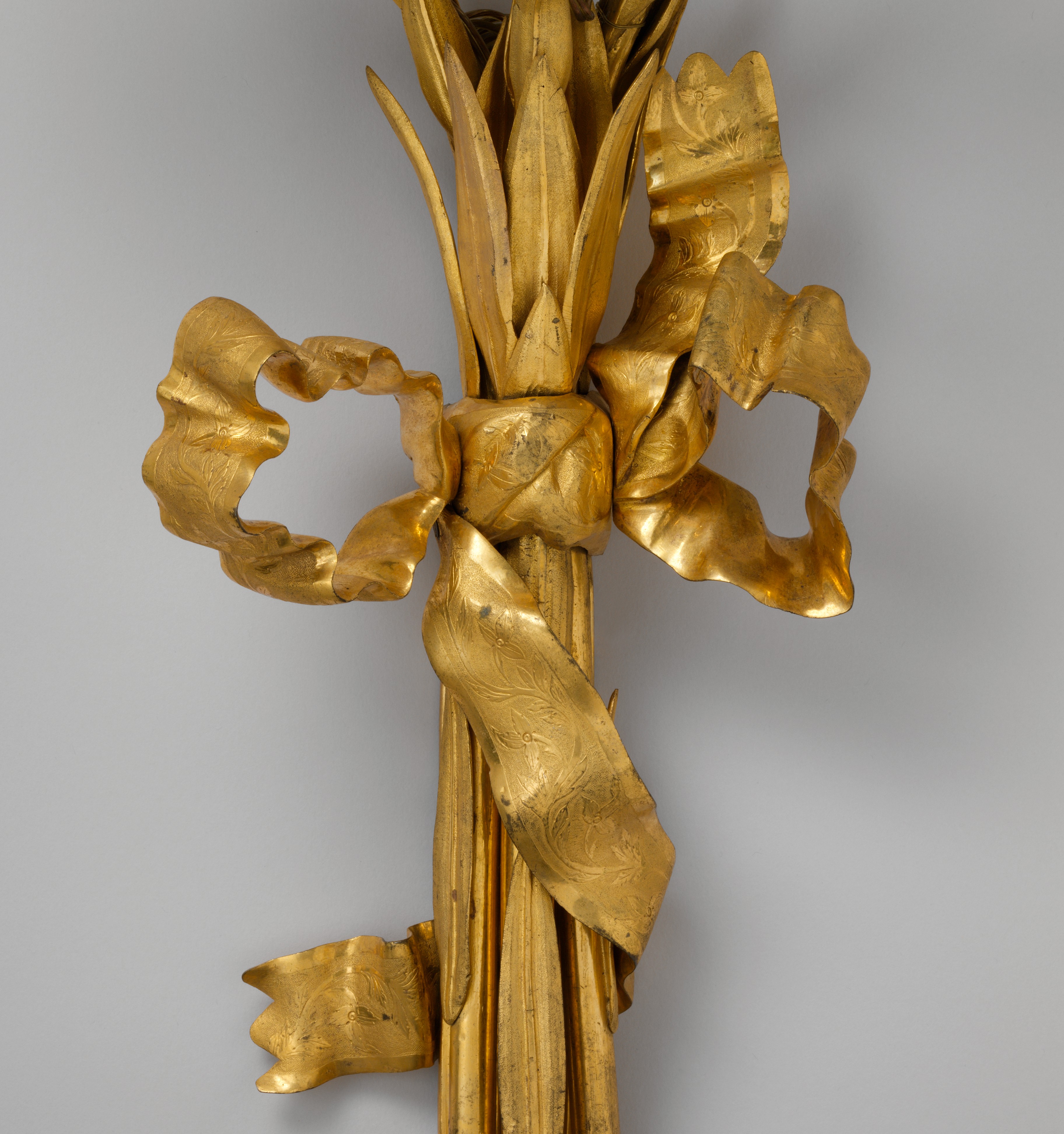Pair of three-light sconces (bras de lumière)
These wall lights are shaped with great naturalism to resemble lily stalks tied together with a large bow. They are not a proper pair, as their ribbons do not complement each other but flow in the same direction; therefore, they were most likely part of a larger set. The unknown chaser and gilder made clear contrasts between such highly burnished areas as the opened blooms and those given a matte finish, such as the buds. Lilies are strongly scented flowers that were very popular during the Neoclassical period, and a number of contemporary references to sconces in the shape of sprays of lilies are known. The successful bronze worker Pierre Gouthière, for instance, made a pair composed of three lily branches for Madame du Barry, mistress of Louis XV, for which he charged 2,500 livres. Horace Walpole reported in a letter of September 9, 1775, to Anne Liddell, that the Grand Cabinet of Madame de Mirepoix’s Parisian hôtel was “illuminated by four branches of lilies of ormolu, each as loose and graceful as that which Guido [ Reni]’s angel holds in the ‘Salutation’ [Annunciation] at [ the church of ] the Carmelites.”
Due to rights restrictions, this image cannot be enlarged, viewed at full screen, or downloaded.
This artwork is meant to be viewed from right to left. Scroll left to view more.





